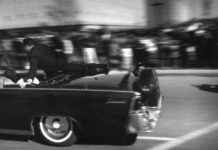Computed tomography (CT) is the reference imaging technique used to diagnose stroke. However, diagnostic errors are not uncommon; It is estimated that current technology can generate 30% false negatives. This leads to doctors failing to detect or localize cerebral infarction, even using high doses of clinically available contrast agents.
A team from i3S, Instituto de Investigão e Inovação em Saúde (Portugal), is working on the development of a more powerful contrast agent than the current ones that will improve the precision in the rapid diagnosis of stroke. Its operation is similar to contrast agents (iodinated molecules) already existing in the clinic. Victoria Leiro, project leader, explains that the great difference and innovation of this biologically safe contrast agent is that it is based on biodegradable dendrimers (developed and patented by the team), a type of macromolecules with a spherical and highly branched structure. . These dendrimers have the ability to access the brain by crossing the blood-brain barrier and can transport multiple iodinated contrast molecules, thus obtaining an amplified dendritic contrast agent that improves contrast in CT images. It has, Leiro adds, the potential to increase the contrast of CT images up to 27 times in relation to current agents.
Furthermore, and due to its greater capacity to increase the contrast in the image obtained, lower doses than those currently used may be used. The technology developed by the group is highly versatile, both from the point of view of the disease and the organ. Therefore, as Leiro advances, in the future it can also be applied to improving the diagnosis of other pathologies of high incidence in society, such as Alzheimer’s and cancer. And heart, lung and kidney diseases, among others, where the greater definition of the images obtained by CT can help achieve a more precise diagnosis.
Transparency statement: This research is funded by the “la Caixa” Foundation, an entity that supports the Big Vang scientific information channel.
























